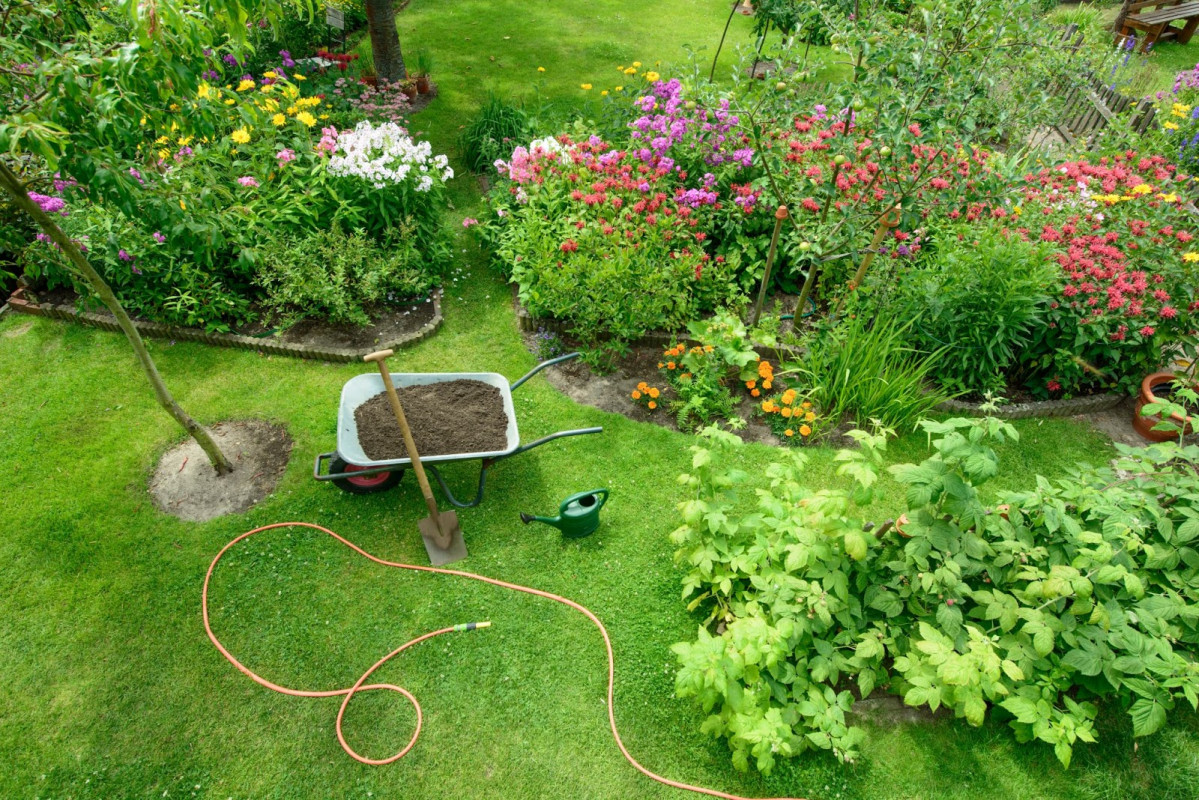Summer Seasonal Tips: Close Out Summer and Kickoff Fall with a Healthy Spruced-up Yard

In the hot, muggy days of summer, weeds and plants grow ferociously in every direction across your yard. Then, they start to dry out, brown, and wither. If you don’t maintain this wilting growth, your landscape will start looking awfully sad and abandoned by the time Fall rolls around. You will need to be conscious of consistently watering your yard and start considering what grows better during Summer and Fall, and adjust accordingly.
Here’s a list of diagnoses, remedies, and useful practices to stick in your back pocket for the end of Summer, the start of Fall, and those hot and sticky weeks in between.
Summer and Fall Maintenance Across the Board
In this section, we’ll cover pruning, late-Summer bloomers, and how to clear Poison Ivy and mulch plant beds. It’s time to treat that yard right and rejuvenate it back to life.
Pruning 101
DIY landscapers and gardeners tend to shy away from pruning. It can make one feel a bit like an amateur plant surgeon, clipping and snipping away aimlessly while trying not to leave a trail of damaged plants in their wake.
Pruning redistributes a plant’s stored energy to other healthier branches and buds, while shedding away unnecessary, uneven growth.
When done properly, pruning results in denser foliage, better blooms, and happier plants. You don’t have to be afraid of pruning if you heed the following standard practices.
1. Pruning Small Shrubs
For smaller, blooming shrubs, use hand pruners and focus on clipping long, unbranched stems just above a healthy bud. This type of pruning is called heading and helps the plant maintain its natural form, while allowing lower branches to develop.
Illustration by Elizabeth Traynore from ThisOldHouse.com
2. Cut at a 45-degree angle
The angle that you make your cut matters because this is the direction new growth will follow. Be sure to find a branch that has a bud facing in the direction where you want to see growth. Clip a 45-degree angle with a sharp tool that will leave a clean cut.
3. Think Seasonally
Do your research on when is the best time to prune any given flower or plant. Timing is critical to setting up healthy new growth. Typically, this will be in Spring or Fall but can vary by plant. Toward the end of Summer, start monitoring which plants might need to be pruned in your yard.
Plant TheseLate-Summer Bloomers
Ample rain and sunshine will spur marvelous growth in a garden. But hot, dry temperatures will leave certain flowers and plants looking brown and tiresome.
Some flowers can handle the intensity of Summer better than others. To achieve a beautiful, subdued palette of yellows, reds, and oranges, consider planting perennials and annuals, specifically marigolds.
You can save the seeds from these colorful flowers and replant new ones each year. Other good flower choices are dahlias, asters, and zinnias. For some inspiration on how to maintain a vibrant garden through each season, check out Kay Burdick’s garden up in Idaho.
 Selling Your Home Soon? Refresh Your Landscape First
Selling Your Home Soon? Refresh Your Landscape First
 Affordable Landscape Upgrades
Affordable Landscape Upgrades